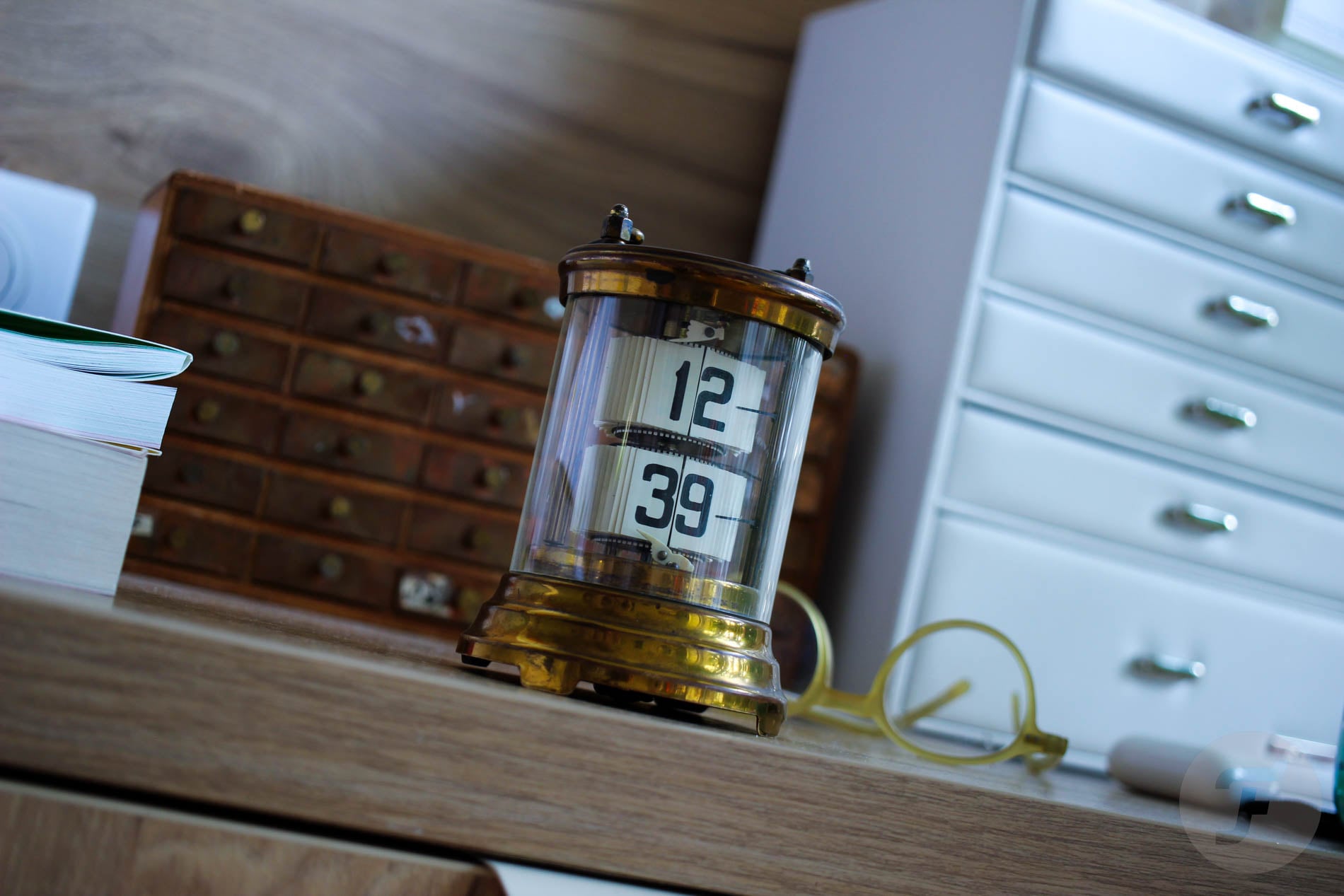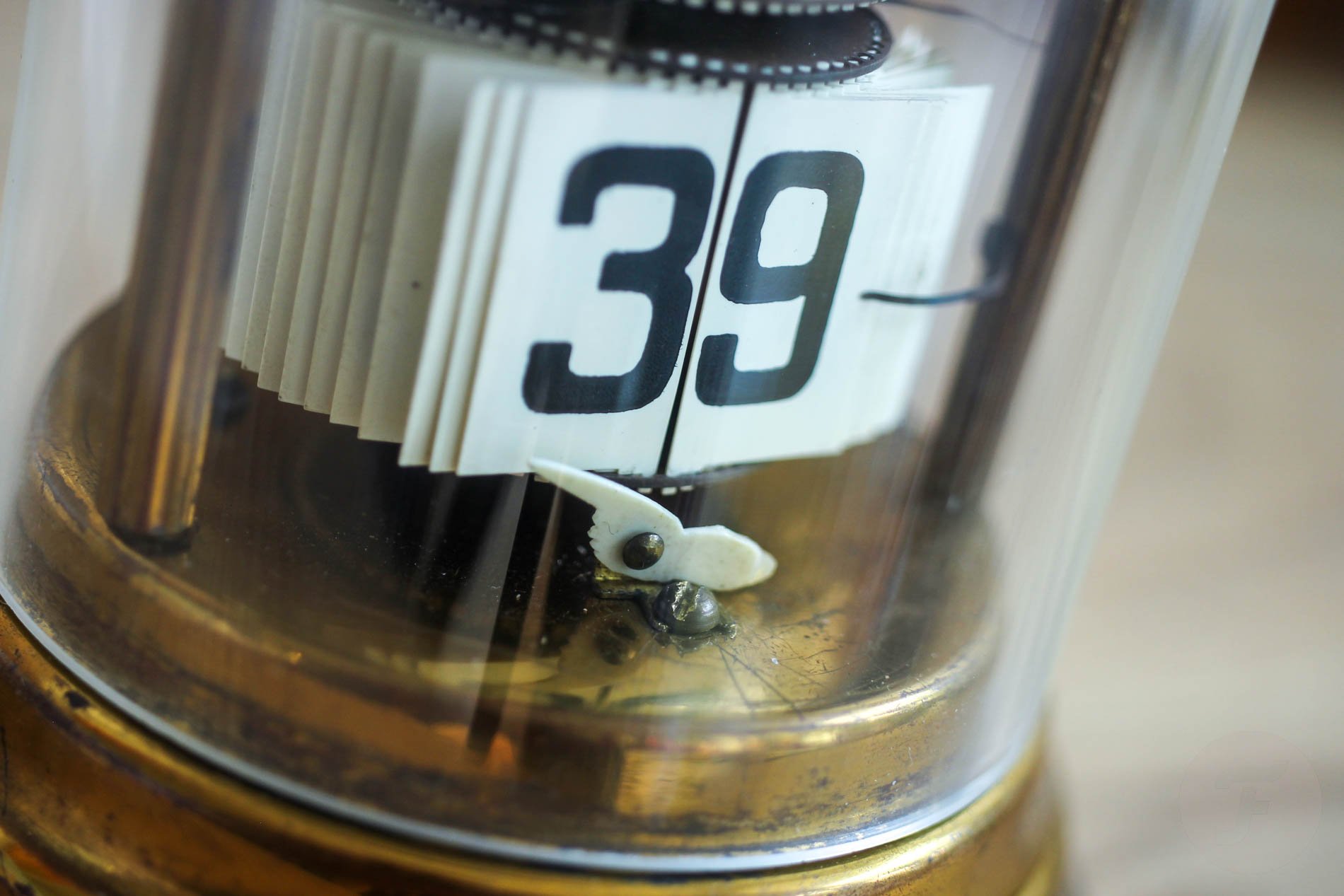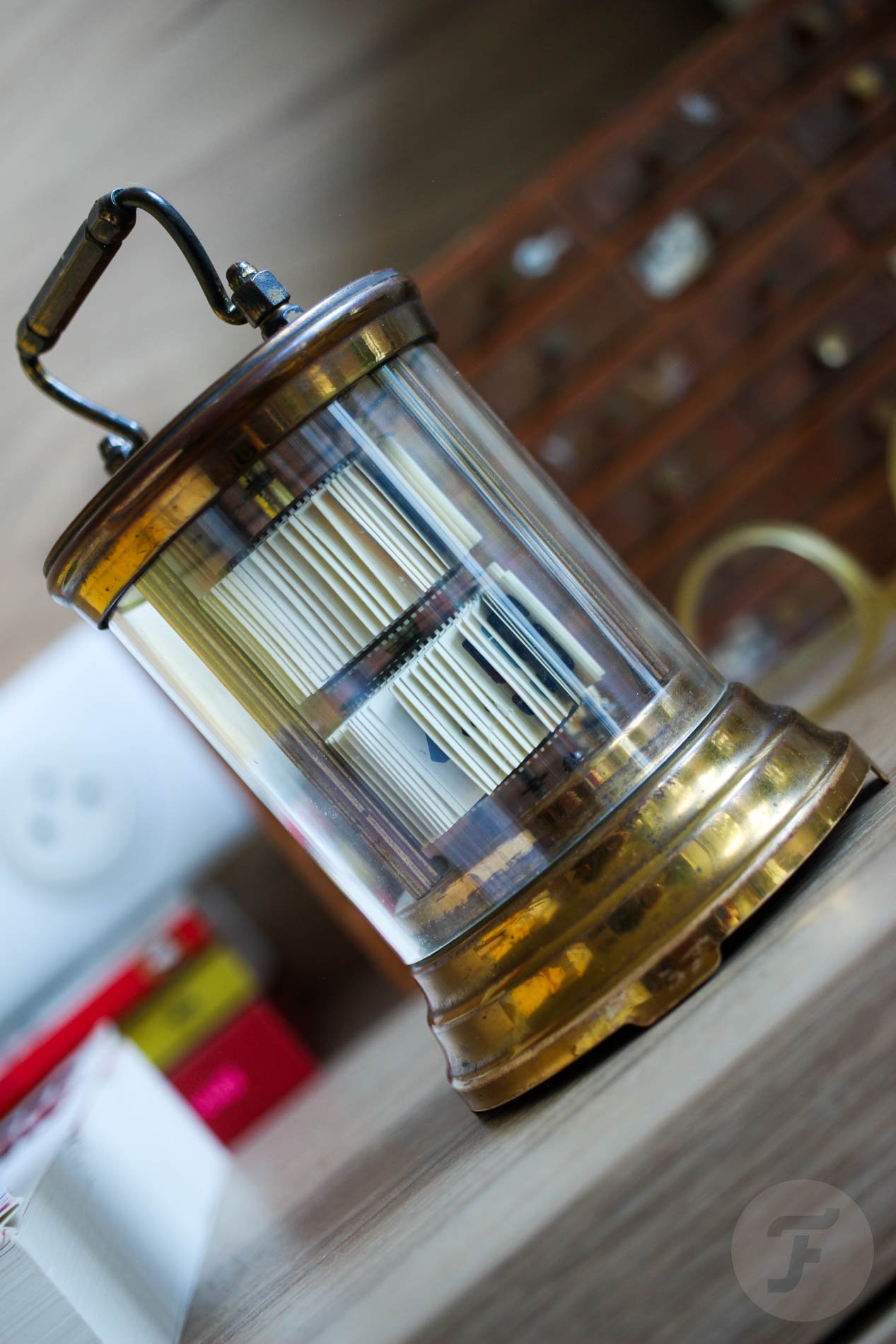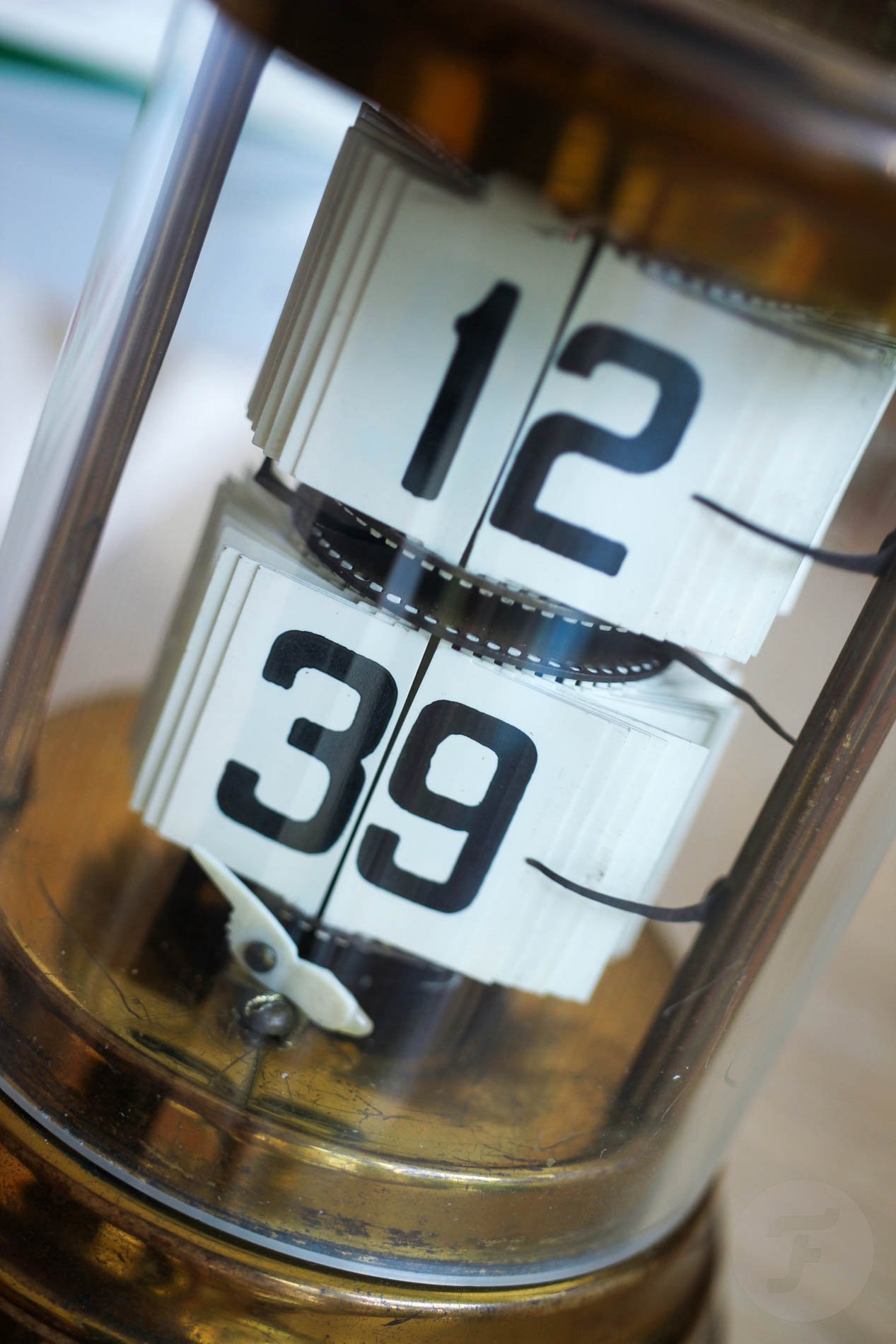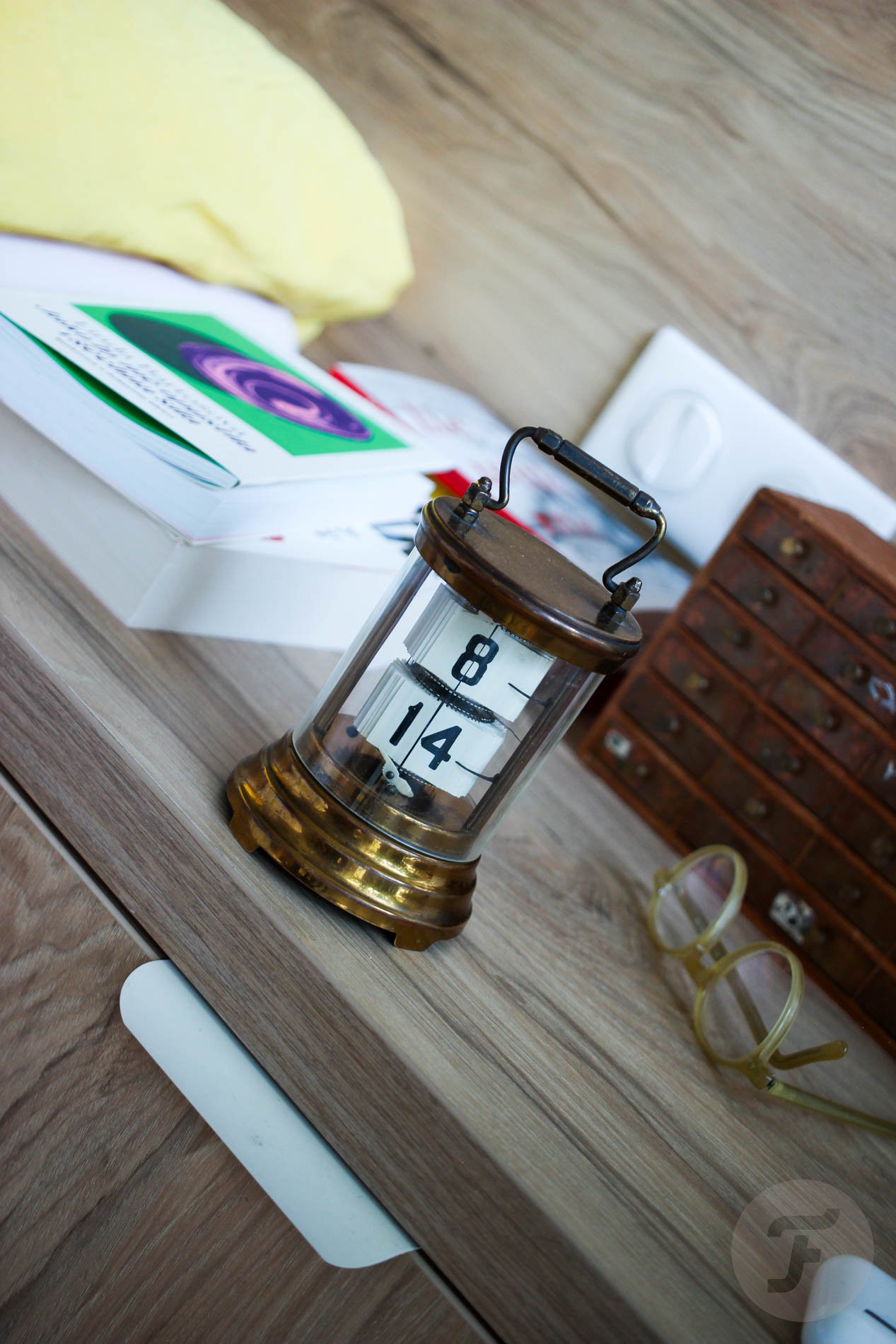Retrospective: True Joy With A 100-Plus-Year-Old Plato Flip Clock
I feel a strong sense of nostalgia for the old flipping scoreboards I remember from my childhood. That’s probably why I adore digital jump-hour watches and quartz flip clocks so much. When I first saw the Plato Clock, patented in 1903, I froze in amazement.
I believe I’m pretty strong when it comes to controlling my watch-buying sprees. I made peace with the idea that I cannot have them all. That’s why I felt confident to start looking at clocks or pocket watches without worrying about falling into a rabbit hole and having an uncontrollable urge to buy everything I see. Occasionally, I check some auctions, wondering how many creations have been made. Getting inspired by pictures is good enough for me — well, 99% of the time…
Love at first sight with the Plato Clock
I still keep 1% open for spontaneous purchases. Honestly, in the last two years, having been overloaded by building an international software company, fathering two wild stars, and reconstructing an old farm house, I haven’t made many impulsive purchases that don’t fall under a well-considered strategy. And here we are. About a month ago, I spotted this flip clock at a Swedish auction house, and within seconds, I knew I was looking at something timelessly genuine.
History
Eugene Fitch was in his mid-50s when he was granted a patent for his invention, which he intended to be an instant time-telling device that would attract attention to advertising messages. He thought that the fast “timetable” display would be perfect for that.
Development
The updated second patent featured a horizontal arrangement with rectangular plates held by discs instead of the vertical arrangement from the first patent. The new layout was bigger and allowed the display of printed numbers on both sides of the plates. In the first patent, each plate dropped onto the previous one due to the pull of gravity. With the horizontal switch, Mr. Fitch had to develop various levers and traps to ensure that each pair of plates would sit correctly. The third patent came with another update. The vertical drive-shaft around which the plate-holding discs revolved leaned slightly backward. This resolved the time display but required a staggering 900 individual components in just three sets of plates, which made the device unmarketable.
The fourth and last patent put the Plato Clock back into the production game. The thin metal plates for the numbers made way for new ones made of lightweight celluloid. This also fixed the problem of premature exposure of the succeeding hour plate before the 60th minute plate of the previous hour came into view. Then, Conrad Hubert, owner of the American Electrical Novelty and Manufacturing Company, came to the stage. He took Fitch’s invention and contracted with the Ansonia Clock Company to manufacture the clocks and marketed them under the name “The Famous Ever Ready Plato Clock.” The rest is history.
Tabletop joy
I have had my Plato Clock for about a month, and I’ve found it magical. Judging by its age and fragility, I still don’t understand how it arrived complete and functional. I wound it, and it started ticking — or more like “shouting.” The movement inside has a pin-lever escapement, so I didn’t expect atomic-clock-like accuracy. You don’t need to be Hans Zimmer to hear the irregular movement. You can imagine how surprised I was to learn that the clock gained “only” 10 minutes per day. While certainly not accurate by today’s standards, that’s not bad for a 100-plus-year-old clock with a mechanism that looks like a single sneeze could damage it.
Massive style
The original Plato Clock was available in four different designs. Since I find baroque decorations, ornaments, and figurines to be huge downers, the design I got is the only acceptable one for me. I must say, I even find it contemporary. The cylindrical brass body is simple — I dare say minimal — and quite modern. When it sits on the table, it’s even smaller than my iPhone. Winding it is easy, and you do it just like with any other vintage alarm clock — flip it over.
I was afraid of setting the time, but it’s also easy. The central hexagonal “crown” on the bottom is easy to rotate, and seeing the minute plates flipping rapidly is one hell of an experience. My favorite thing is to set it to a full hour when, instead of double 0s, you can read, for instance, “9 o’clock.” What a style!
Last thoughts
Finding a solid Plato clock is not easy. Judging by the number of Google search results, there are always some resurfacing, so if you are patient, you can get one sooner or later. I have to admit I am also not sure about how complicated it could be to service one of these clocks. When I showed mine to my beloved watchmaker friend, he half-jokingly said he never wanted to service it. The problem is that he was also half-serious… But we will cross that bridge when we come to it. For now, I enjoy having the clock on my office desk. Happy hunting!

